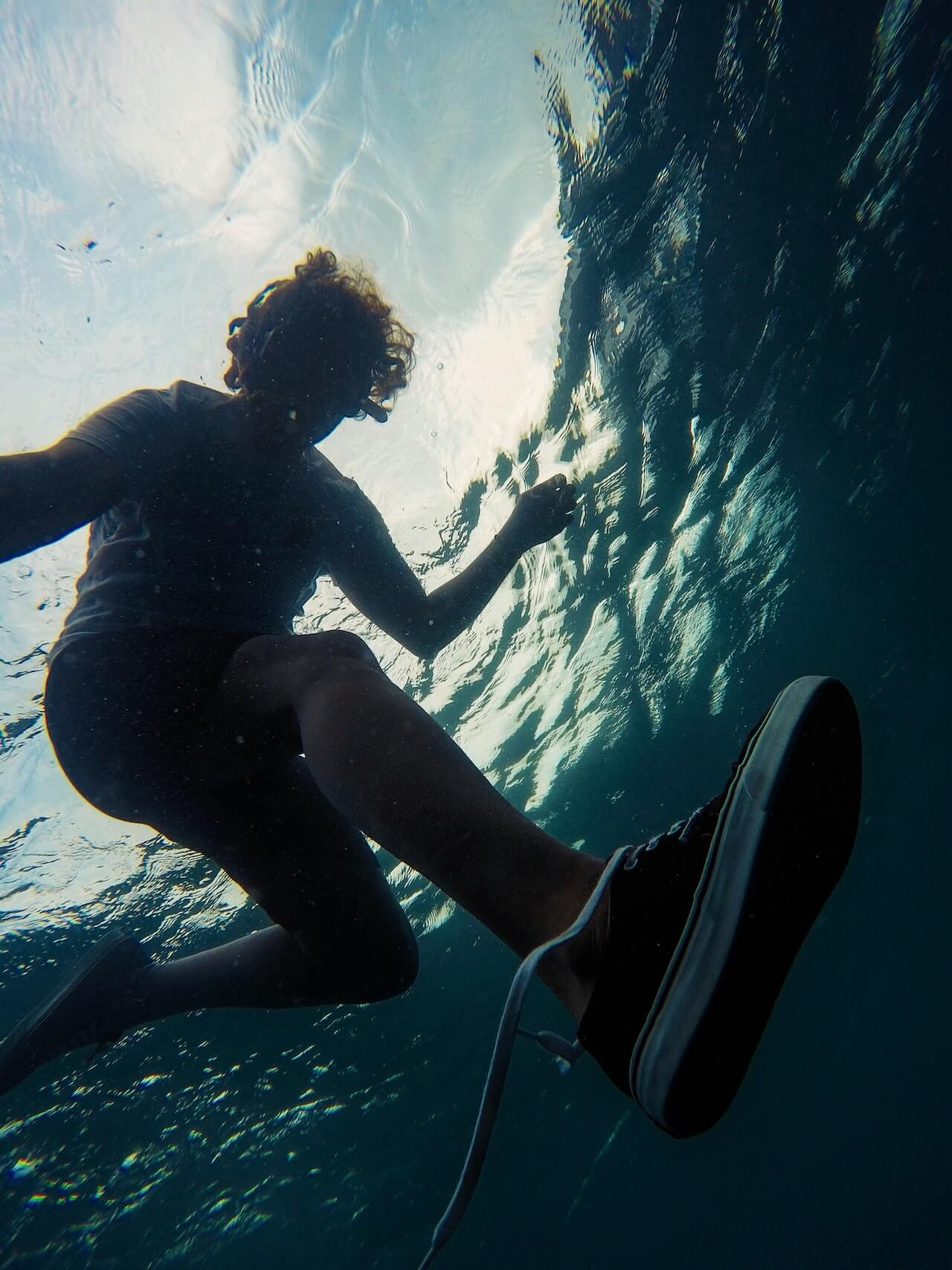There are many outdoor activities that get your feet wet, but it’s not always feasible to do these activities barefoot when water shoes are better suited for the task. This begs the question: can you go swimming with shoes on?

Yes, you can swim with shoes on, but the experience and effectiveness largely depend on the type of shoes you’re wearing. As long as you’re wearing water shoes and not regular shoes, it might be necessary to swim in them in certain situations like crossing a river during a hike or a multi-sport competition.
In this article, we will go over what it’s like to swim with both water shoes and regular shoes and help you weigh the pros and cons of each.
What types of shoes can you swim in?
There are specific types of shoes designed for water activities, including swimming. Water shoes, aqua shoes, and water socks are some examples. These types of shoes are made from lightweight, quick-drying materials and often have grippy soles to prevent slipping on wet surfaces. They are designed to provide protection against rough surfaces, sharp objects, or potentially harmful sea creatures while not significantly hindering the user’s swimming ability.
Can you swim in sneakers or regular shoes?
Swimming in sneakers or regular shoes is technically possible, but it’s not advisable or comfortable. Sneakers are typically heavy and bulky, especially when waterlogged, and this can greatly hinder your swimming speed and efficiency. Depending on your swimming ability and swimming conditions, they can be a drowning risk. Regular shoes also don’t dry quickly, which can lead to discomfort or potential issues like blisters and athlete’s foot.
Can you wear shoes to the pool?
Most pools allow shoes in the pool area but not typically in the water. Water shoes or aqua socks are generally acceptable. However, sneakers or other street shoes are usually not allowed to keep the pool clean and safe. It’s always best to check with the pool’s policies before bringing shoes into the water.
What are the advantages of swimming with shoes on?
Swimming with shoes on can have certain advantages. If you’re in open water, shoes can provide protection against sharp objects, rocks, and harmful creatures. In survival or rescue situations, swimming with shoes on might be unavoidable and could potentially save your life by helping you navigate rough terrains in and out of water.
What are the disadvantages of swimming with shoes on?
There are also several disadvantages to swimming with shoes on. Shoes can add weight and drag, slowing you down significantly. They can also alter your swimming technique, particularly your kicking, as the added weight and resistance can impact your foot’s natural flex and kick in the water. This might lead to increased fatigue and reduced efficiency over time.
How do shoes affect your swimming technique and speed?
Shoes can greatly affect your swimming technique and speed for the worse. While they can offer protection and potentially improve grip in the water, they also add weight and increase drag, making it harder to swim. Shoes can disrupt the natural kicking motion in various swimming strokes, leading to a less efficient technique and slower speeds.
Do triathletes swim in their shoes or take them off?
Triathletes typically do not swim in their shoes. In a triathlon, participants generally swim first, then transition to the cycling portion, and finally run. The transition areas allow athletes to change gear as needed. It would be very impractical and inefficient to swim in cycling or running shoes, as these would greatly inhibit movement and speed in the water. Hence, triathletes usually swim barefoot or with swim-specific gear, then put on their shoes for the subsequent portions of the race.
Can you wear shoes for swim training?
Yes, swimming in shoes for training is an old-school training method that is sometimes used. How it works is that by intentionally increasing the difficulty by putting more strain on your kick movement, you are giving your leg muscles extra resistance to overcome which can lead to improvements once you take the shoes off.
Sources:

